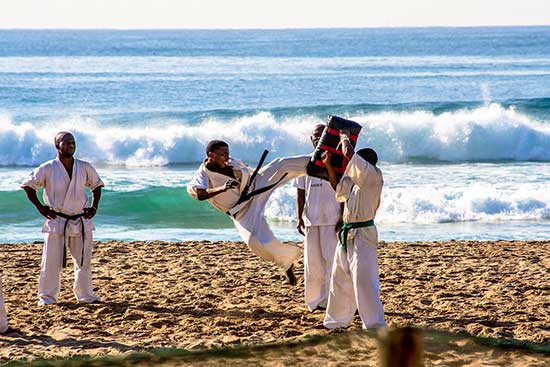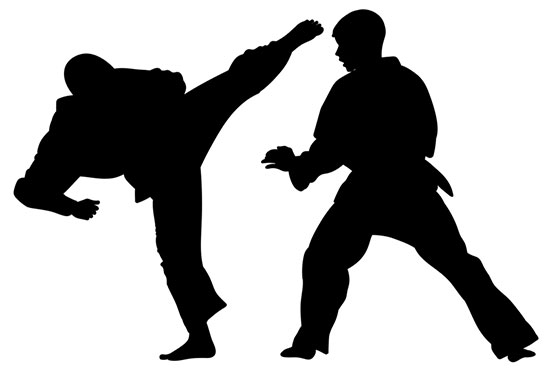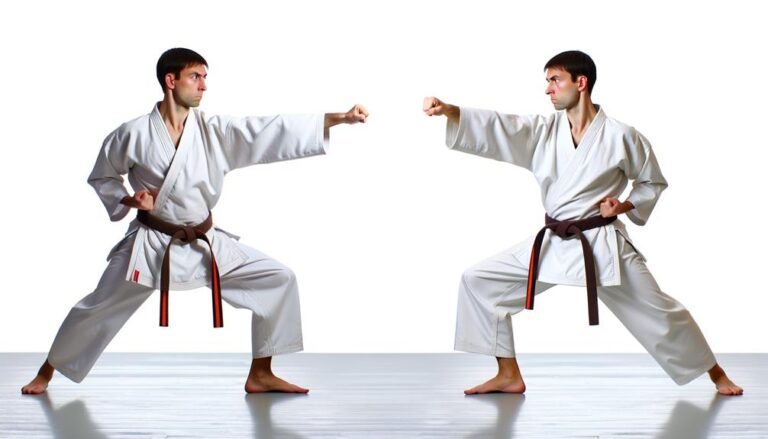A purple belt in Karate implies that the student has achieved an intermediate proficiency level in the art. The belt represents a transition from beginner to intermediate levels in many martial arts.
Thus, after attaining the purple belt, the practitioner is expected to have a solid foundation of the fundamental techniques and karate principles.
Also, the students should show a higher level of skill and understanding in basic karate training. Therefore, if a person is awarded a purple belt, they are expected to have captured the basic skills such as kicks, blocks, stances, and punches in addition to many intermediate-level techniques like kumite (sparring) and kata (pre-arranged forms).
Moreover, they are expected to have mastered principles of body control, balance, and efficient movements and would be required to use the skills in training and real-life situations.
After achieving the purple belt, you continue to train and develop technical skills and physical conditioning.
Furthermore, you begin to focus on mental and strategic aspects of karate, such as advanced kata, more about self-defense tactics, and the ability to read the mind and react to the opponent during sparring situations.
The purple belt is an award to encourage the student to keep improving and progressing towards more complex karate training levels.
Contents
Is there a purple belt in karate?
Yes. In karate, a purple belt is awarded to practitioners after achieving their intermediate proficiency level in the art.
Thus, a purple belt marks a transition from beginner to intermediate levels. It is only awarded to students who have demonstrated essential skills in karate, such as various strikes, punches, kicks, stances, and blocks, in addition to kumite and kata.
The purple belt also shows that they have proven progressive training.
What does a purple belt mean in karate?
In karate, the purple belt means the student has achieved the intermediate level and is transitioning from beginner to intermediate.
The purple belt means the practitioner has more expertise and skills than a white belt holder. White belts are given to beginners, while brown belts are much more advanced than purple belts and are given to students who have fully mastered the art of karate.
In martial art schools, the color belt ranking shows students’ achievements and skills. The requirements to earn a purple belt in karate depend on the organizational requirements and the type of karate being trained.
Some organizations have more structured rules for attaining the belt. The techniques the student should achieve are set so those who show continuous training and achievement of goals are given to mark a transition to the next step.
It is essential to talk with your instructor about the requirements to achieve the purple belt and to work hard towards achieving the belt.
Additionally, knowing the needs helps one structure training time to improve on areas of weakness and spend less time completing the karate martial art training.
When does a student achieve the purple belt?
A karate practitioner achieves the purple belt after showing a certain level of proficiency in techniques and principles of martial art.
In most martial schools, being awarded the purple belt implies that the student has reached an intermediate level of skills and knowledge in addition to other ways necessary to become an advanced karate student.
Each school has varying requirements for the achievement of a purple belt. Some have exams or tests that the student must score above average for them to receive the promotion.
In contrast, others have practical and flexible criteria that evaluate the practitioner’s overall performance.
Generally, a practitioner who has achieved a purple belt should understand the basic techniques necessary in self-defense and be able to exercise them accurately and with control.
The students with the purple belt should be able to practice the method of power, timing, control, and balance efficiently and be in a position to apply them in real-life situations.
Moreover, the student with a purple belt should practice high ethics consideration, discipline, and commitment to the work.
The ability to apply these techniques in daily activities shows that the student is progressively learning and aiming to achieve the brown belt given time.
Achieving a purple belt in karate is a significant step in karate martial steps. Those who complete it should be given respect and honor for their hard work, discipline, commitment, and willingness to progress in training.
How long does it take to get the purple belt in Karate?
The period it takes to get a purple belt in karate varies. The factors vary depending on factors such as the type of karate being trained, organizational structure and rules, the individual’s dedication to training, the intensity of the movement, and the attendance frequency.
Therefore, the time to attain a purple belt in karate art is five months to several years, depending on personal effort and organizational requirements.
Karate practitioners need to consider their strengths in the training time and overall skills and performance after the training.
Frequent practice in martial art improves the individual’s self-defense mechanism.
Personal effort and dedication in karate determine the time taken to achieve the purple belt. Discipline individuals who practice karate regularly can exercise the skills quickly and with more tactics, with less physical damage.
Therefore, a fast learner student with a passion for karate could achieve the purple belt even before the five months elapses.
What level is the purple belt?
Purple belt is an intermediate level. It is above the white belt but below the brown belt. At the intermediate level, the student has demonstrated the basic karate techniques efficiently and is in a position to practice them in case of attack by opponents.
At this level, the student should demonstrate techniques such as kicks, punches, strikes, and blocks, in addition to katas and kumite.
Furthermore, they are expected to have mastered principles of body control, balance, and efficient movements and would be required to use the skills in training and real-life situations.
Closing thoughts
Karate training is stepwise, and practitioners are awarded belts for showing a transition to another level.
The purple belt shows that the learner is in a position to practice the essential skills efficiently and has demonstrated high conduct in discipline and attitude toward the training.
The basic techniques the student should demonstrate include; performing several kicks, punches, blocks, and strikes, as well as a combination of katas and kumite.
The purple belt is a transition from beginner to intermediate level. The average time spent in achieving the purple belt varies from the type of karate being trained, the discipline of the student, and the school or organizational structure.
Students need to discuss with their trainers the requirements to achieve the purple belt to make efforts to achieve them and spend less time in karate training, a dream of many practitioners.





